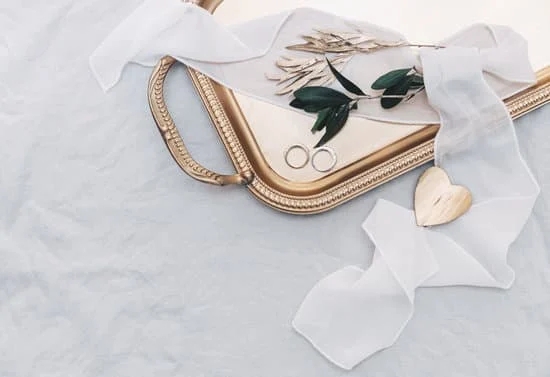How are diamonds made into jewelry? This question has captivated mankind for centuries, as the allure of these precious stones has never waned. From the raw formation deep within the Earth’s crust to the enchanting sparkle adorning a piece of jewelry, the transformation process of diamonds is truly remarkable.
In this article, we will delve into the intricate journey that diamonds undertake, from their extraction and cutting to their polishing and certification. We will explore the artistry and craftsmanship involved in creating exquisite diamond jewelry, as well as shed light on ethical sourcing and sustainability in the industry. Join us on this mesmerizing exploration of how diamonds are transformed into breathtaking works of art.
Diamonds have a mystical origin that can be traced back millions of years ago. These gemstones are formed under immense pressure and heat deep within the Earth’s mantle, where carbon atoms bond together to create crystal structures. Through volcanic eruptions or by being carried up to the surface through geological processes, diamonds eventually find their way into mines around the world.
Once extracted from these mines, it is time for diamonds to undergo a series of meticulous procedures before they become suitable for use in jewelry. The rough stones must be carefully examined by experts who determine their potential value and ascertain their cutability. The next step involves cutting and shaping the diamonds into dazzling forms that enhance their brilliance. This process requires precision and skill, with each facet being carefully crafted to optimize light reflection.
As any diamond connoisseur knows, it is not just about shape and cut; clarity, color, carat weight, and cut are also crucial factors in determining a diamond’s quality. Diamond grading institutions assess these characteristics using scientific techniques. Once evaluated and certified by these trusted authorities, diamonds can confidently be used in jewelry-making.
The journey from rough diamond to refined gem doesn’t end there though – artistic designs await them. Expert jewelers employ various styles and techniques to create unique settings that showcase the diamond’s natural beauty and personality. The craftsmanship is awe-inspiring, with attention to even the tiniest detail. The end result is a captivating piece of diamond jewelry that tells a story and stands as an extraordinary testament to human artistry.
As we embark on this exploration into the transformation of diamonds into stunning jewelry, it is important to also consider the ethical aspects. Responsible sourcing and sustainable practices have gained increasing significance in the diamond industry. Efforts are being made to ensure that diamonds are ethically mined, protecting both human rights and the environment.
Join us as we unveil the secrets behind creating these incredible pieces of art, delve into the fascinating processes involved in transforming rough diamonds into refined gems, and shed light on the importance of responsible production. Discover how diamonds capture our imagination and become extraordinary symbols of love, beauty, and luxury.
The Formation and Extraction of Diamonds
Diamonds, the most coveted gemstones in the world, have a remarkable journey that starts deep within the Earth’s crust. The formation of diamonds is a result of intense heat and pressure acting on carbon atoms for millions of years. These precious gems are found in diamond mines located all around the globe. Let us delve into the fascinating process of how diamonds are formed and extracted.
Underneath the Earth’s surface, diamonds begin their journey as carbon atoms exposed to high temperatures and extreme pressure conditions. These conditions can be found at depths between 140 to 190 kilometers below the surface. As volcanic activity occurs, it brings the diamond-bearing rocks closer to the Earth’s surface through vertical formations known as kimberlite pipes or diatremes.
Once identified, diamond miners excavate these kimberlite pipes using different mining methods such as open-pit mining or underground mining techniques. Open-pit mining involves removing the soil and rock layers above the diamond-bearing pipes, while underground mining comprises tunnels and shafts to access deeper deposits.
After extraction, the material undergoes several processes to separate diamonds from other minerals and impurities. This can involve crushing or grinding the ore into smaller pieces before utilizing techniques like heavy media separation or X-ray luminescence to sort out the diamonds based on their density or fluorescence properties.
From Rough to Refined
When it comes to transforming raw diamonds into dazzling gemstones, the process of cutting and shaping plays a crucial role. This is the stage where skilled artisans unleash their expertise, carefully shaping each diamond to unlock its true beauty. In this section, we will delve into the fascinating world of diamond cutting and shaping, exploring the techniques used to unleash the brilliance and fire within these precious stones.
The Importance of Diamond Cutting
Diamond cutting is not merely about fashioning a stone into a specific shape; it is also about maximizing its optical properties. A well-cut diamond reflects light in such a way that it creates an unparalleled display of brilliance, sparkle, and scintillation. The precision involved in diamond cutting determines how effectively light is refracted within the gemstone, resulting in its overall beauty.
The Process of Diamond Cutting
The process of diamond cutting begins with an assessment of the rough diamond. Skilled cutters evaluate numerous factors such as carat weight, clarity, color, and structural integrity to determine the best approach for cutting while preserving as much weight as possible. Once these decisions are made, cutting commences using specialized tools known as scaifs.
One technique commonly used in diamond cutting is called bruting or girdling. This involves shaping the diamond by grinding two stones against each other until they achieve a desired form. After bruting, facets are carefully cut and polished onto different faces of the gemstone using precise angles and proportions dictated by mathematical formulas developed over centuries.
The Artistry Behind Diamond Shaping
Diamond shaping involves transforming rough stones into various shapes such as round brilliant cut, princess cut, emerald cut, or pear shape. Each shape requires distinct skills from master craftsmen who use their creativity to showcase the beauty within each stone. The selection of shape often depends on the inherent qualities of the rough diamond, including its symmetry, clarity, and color.
The Art of Diamond Polishing
Once the rough diamonds have been cut and shaped, the next crucial step in the journey of transforming them into exquisite jewelry is diamond polishing. Diamond polishing is an art form that involves enhancing the brilliance, fire, and sparkle of a diamond by creating a smooth and reflective surface on its facets.
Polishing a diamond requires great skill and precision, as even the slightest mistake can impact its final appearance. The process begins with the use of a grinding wheel coated with diamond dust or powder, which gradually removes any imperfections or rough spots on the surface of the diamond. This initial stage of polishing is known as blocking.
After blocking, the diamond goes through several stages of finer polishing to achieve its desired brilliance. Each facet is meticulously polished using various grades of abrasive pastes or powders until they are perfectly smooth and reflect light evenly. A skilled polisher knows exactly how to manipulate the angles and pressure to maximize the diamond’s potential for brilliance.
Achieving unparalleled brilliance also involves paying attention to the proportions and symmetry of the diamond. These factors greatly influence how light interacts with the stone, ultimately affecting its overall sparkle. A highly skilled polisher will carefully evaluate these aspects throughout each stage of polishing to ensure optimal results.
In addition to enhancing a diamond’s shine, polishing also serves another important purpose – it finalizes the shape and size of the stone. As each facet is polished away, it takes away part of the rough material, resulting in a smaller but more refined gemstone. Polishing brings out the true beauty hidden within each rough diamond, revealing its unique characteristics and making it ready to be set into a stunning piece of jewelry.
The artistry and expertise behind diamond polishing play an integral role in creating truly exceptional jewelry pieces. Through this meticulous process, diamonds are transformed from raw stones into dazzling gems that captivate with their brilliance and elegance. The secrets unveiled during diamond polishing contribute to making every piece of diamond jewelry a true masterpiece that is cherished and admired for generations to come.
Diamond Grading and Certification
When it comes to buying diamond jewelry, understanding the grading and certification process is crucial. The four C’s – clarity, color, carat, and cut – are the main factors that determine the value and quality of a diamond. Let’s take a closer look at each of these aspects.
Clarity
Clarity refers to the presence of any internal or external blemishes in a diamond, known as inclusions and blemishes. Inclusions are formed during the diamond’s natural growth process, while blemishes can occur due to cutting or other external factors. A higher clarity grade means fewer imperfections and thus a higher value.
The Gemological Institute of America (GIA) uses a scale to grade clarity from Flawless (no inclusions or blemishes visible under 10x magnification) to Included (inclusions visible without magnification). It is important for consumers to choose diamonds with a clarity grade that meets their personal preferences and budget.
Color
Diamonds come in various shades ranging from colorless to light yellow or brown. The GIA grades diamond color on a scale from D (colorless) to Z (light yellow or brown). The closer a diamond is to colorless, the rarer and more valuable it is considered. However, some colored diamonds, such as blue or pink diamonds, are highly sought after for their unique hues.
The color grading is done by comparing diamonds under controlled lighting conditions against master stones of known colors. It requires trained experts who assess subtle differences in hue to assign an accurate color grade. Consumers should consider their personal preferences when choosing a diamond’s color grade.
Carat
Carat is a unit of measurement used for diamonds that determines their weight. One carat is equal to 200 milligrams or 0.2 grams. However, it’s important to note that carat weight alone doesn’t determine a diamond’s size or value. The cut and shape of the diamond also play significant roles.
While larger diamonds are generally more valuable, the quality of the cut can greatly impact a diamond’s appearance. For example, a well-cut smaller diamond may appear larger in size than a poorly-cut larger one. Ultimately, consumers should consider their preferences for size and prioritize cut quality to ensure the best visual appeal.
Cut
The cut of a diamond refers to how effectively light is reflected and refracted within the stone, creating its brilliance and sparkle. A properly-cut diamond reflects light from one facet to another before dispersing it through the top, giving it an impressive sparkle.
Diamond cuts are graded as Ideal, Excellent, Very Good, Good, Fair, or Poor based on their proportions and symmetry. It’s important to choose diamonds with excellent or very good cuts for maximum brilliance and fire. The cut is often considered the most crucial factor in determining a diamond’s beauty.
By understanding each aspect of diamond grading – clarity, color, carat, and cut – consumers can make informed choices when purchasing diamond jewelry. A reputable jeweler will provide a certificate from a recognized gemological institute like GIA or AGS that verifies the authenticity of the grading information for added assurance. With this knowledge, you can confidently select diamonds that meet your personal style and budget while ensuring exceptional quality and value.
Designing the Perfect Setting
When it comes to creating exquisite diamond jewelry, designing the perfect setting is crucial. The setting not only holds the diamond securely in place but also enhances its brilliance and beauty. There are various styles and techniques used in diamond jewelry settings, each creating a unique look and feel. Let’s take a closer look at some of these styles:
- Prong Setting: The prong setting is one of the most popular choices for diamond jewelry. It consists of small metal claws or prongs that hold the diamond in place. This setting allows maximum light to enter the stone, enhancing its sparkle. Prong settings can be designed with different numbers of prongs, such as four or six, depending on the shape and size of the diamond.
- Bezel Setting: The bezel setting involves surrounding the entire perimeter of the diamond with a metal rim. This creates a secure hold while providing protection to the stone’s edges. Bezel settings can be either full or partial, where only a portion of the diamond is enclosed by metal. This style offers a contemporary and sleek look to diamond jewelry.
- Channel Setting: In a channel setting, diamonds are set side by side within a groove or channel cut into the band of the jewelry piece. This style is commonly used for wedding bands or eternity rings where diamonds are placed continuously around the circumference of the band without any visible metal separating them.
- 4.Pave Setting: Pave setting involves closely placing small diamonds together, leaving almost no visible metal between them, giving an appearance of a “paved” surface covered in diamonds. It creates an effect of continuous sparkle and adds extra brilliance to any piece of jewelry.
In addition to these traditional styles, there are also various techniques used in modern diamond jewelry design including invisible settings, tension settings, cluster settings, and many more.
Designing the perfect setting requires skilled craftsmanship and attention to detail. Jewelers carefully consider factors such as the shape, size, color, and cut of the diamond, as well as the overall design of the jewelry piece. They work meticulously to ensure that the setting not only showcases the diamond’s beauty but also complements its unique characteristics.
By selecting the appropriate style and technique for a specific diamond, designers are able to create jewelry pieces that are both stylish and timeless. Whether it’s an engagement ring, necklace, earrings, or bracelet, a well-designed setting can truly elevate the beauty of a diamond and make it a stunning statement piece.
The Skillful Craftsmanship of Setting Diamonds
In the world of jewelry making, setting diamonds is a highly skilled craft that requires precision and expertise. The process of setting diamonds involves securing the gems onto a piece of jewelry in a way that showcases their beauty while ensuring their durability. This section will delve into the intricate techniques used by jewelry artisans to create jaw-dropping diamond pieces.
One common technique used in diamond setting is called prong setting. Prong setting involves using small metal wires, known as prongs, to hold the diamond in place. The prongs are carefully manipulated to position the diamond securely within the piece of jewelry while allowing maximum light exposure to enhance its brilliance. This type of setting is often used for solitaire diamond rings or earrings, where the focus is on displaying a single stunning stone.
Another popular technique is called pavé setting. In pavé setting, multiple small diamonds are set closely together so that they appear like a paved surface of diamonds on the jewelry piece.
To achieve this effect, tiny holes are drilled into the metal and each diamond is individually set and secured using beads or small prongs. Pavé setting adds an extra layer of sparkle and luxury to any piece of jewelry, and it is commonly used in diamond bracelets or wedding bands.
A third technique worth mentioning is channel setting. Channel setting involves placing diamonds into a channel cut out within the piece of jewelry, creating a sleek and uninterrupted line of gemstones. This method provides excellent protection for each diamond while still allowing them to shine brightly as they are held securely in place by metal walls on either side. Channel set diamonds are often seen in eternity rings or as accents along the band of an engagement ring.
The craftsmanship involved in these techniques requires both technical skill and artistic vision. Jewelry artisans must have a deep understanding of how to handle delicate materials and use specialized tools to manipulate the metal and gemstones. By combining their expertise with the unique characteristics of each diamond, these craftsmen are able to create stunning pieces that showcase the beauty and brilliance of these precious gemstones.
| Setting Technique | Description |
|---|---|
| Prong Setting | Uses small metal wires (prongs) to hold the diamond in place, allowing maximum light exposure. |
| Pavé Setting | Sets multiple small diamonds closely together to create a paved surface of diamonds on the jewelry piece. |
| Channel Setting | Places diamonds into a channel cut out within the piece of jewelry to create an uninterrupted line of gemstones. |
Ethical Sourcing and Sustainability
Diamonds are not only beautiful and precious, but they also have the power to make a positive impact on the world when sourced and produced responsibly. As consumers become more conscious about the ethical implications of their purchasing choices, the diamond industry has been pushed to examine its practices and strive for more sustainable methods.
One of the key areas of concern in diamond production is ensuring that diamonds are ethically sourced. This means that they have been obtained without causing harm to people or the environment. Conflict diamonds, also known as blood diamonds, have been a major issue in the past.
These diamonds are mined in war zones and sold to finance armed conflict against governments. In response to this issue, the Kimberley Process Certification Scheme was established in 2003, aiming to prevent conflict diamonds from entering the legitimate diamond supply chain.
In addition to avoiding conflict diamonds, responsible diamond production also encompasses other aspects of sustainability. These include minimizing environmental impact by reducing carbon emissions, conserving water resources, and implementing land rehabilitation programs after mining is completed. Responsible diamond producers are committed to establishing transparent supply chains and promoting fair labor practices within their operations.
| Ethical Sourcing Measures | Sustainability Initiatives |
|---|---|
| Ensuring diamonds are not conflict or blood diamonds | Reducing carbon emissions |
| Promoting fair labor practices | Conserving water resources |
| Establishing transparent supply chains | Implementing land rehabilitation programs |
By supporting responsible diamond production, consumers can contribute to positive change in the diamond industry. Many jewelry brands now offer diamonds that are certified to be ethically sourced, providing consumers with more options to make conscious purchasing decisions. Additionally, organizations like the Responsible Jewellery Council and the Diamond Development Initiative work towards promoting responsible practices throughout the diamond supply chain.
The Final Touches
After the diamonds have been cut, polished, and placed in their settings, the final touches are added to create truly extraordinary diamond jewelry. These final touches often involve personalization and enhancements that make each piece unique and special.
One popular way to personalize diamond jewelry is through engraving. Engraving allows for the addition of meaningful messages, names, dates, or symbols onto the metal part of the jewelry. This can be done by hand or with the help of laser technology. Engraving adds a sentimental touch to the piece and can turn it into a cherished heirloom.
Another way to enhance diamond jewelry is through the addition of colored gemstones. Diamonds can be paired with other precious gemstones such as sapphires, rubies, and emeralds to add color and contrast to the design. Whether used as accents or as center stones themselves, colored gemstones can elevate the overall aesthetic of the piece and create a visually stunning effect.
In addition to engraving and colored gemstones, other enhancements can be made to diamond jewelry. One such enhancement is the addition of intricate filigree work or decorative metalwork. Filigree involves twisting fine threads or wires of precious metal into delicate patterns that are then incorporated into the design of the jewelry. This technique adds a sense of intricacy and craftsmanship to the piece.
The final touches put on diamond jewelry not only add personalization but also contribute to its overall beauty and value. These enhancements allow for customization and help create pieces that truly stand out from others on the market. By adding personal touches like engraving or incorporating colorful gemstones or intricate metalwork, jewelers are able to transform diamonds into pieces that hold deep emotional meaning for their wearers while also showcasing exceptional artistry and craftsmanship.
Conclusion
In conclusion, the journey of how diamonds are transformed into exquisite jewelry is truly fascinating. From their formation deep within the Earth’s crust to their extraction and the intricate processes of cutting, shaping, and polishing, diamonds undergo a magical transformation before they become the sparkling masterpieces that adorn our fingers, necks, and ears.
One of the key factors in achieving the unparalleled brilliance of diamonds is the art of diamond polishing. Skilled craftsmen meticulously enhance each facet to maximize the stone’s fire and sparkle. Diamond grading and certification also play a significant role in ensuring that customers understand the quality of their diamond based on its clarity, color, carat weight, and cut.
The creation of diamond jewelry extends beyond just focusing on the stones themselves. Attention is also given to designing the perfect setting. Different styles and techniques are used to showcase the beauty of each diamond, from traditional solitaires to elaborate halo designs. The skilled craftsmanship involved in setting diamonds requires precision and attention to detail in order to create jaw-dropping pieces.
Furthermore, responsible diamond production is crucial for ethical sourcing and sustainability. The diamond industry has made great strides in recent years to ensure that diamonds are sourced responsibly, with an emphasis on fair labor practices and environmentally friendly mining methods.
Ultimately, turning raw diamonds into artistic creations requires a combination of knowledge, skill, creativity, and ethical practices. The journey from rough to refined involves several intricate processes that result in breathtaking pieces of jewelry that will be cherished for generations. Whether it is a simple pendant or an elaborate engagement ring, these transformed diamonds truly hold within them a magical allure that captivates us all.
Frequently Asked Questions
Are diamonds glued to jewelry?
Diamonds are not typically glued to jewelry. Instead, they are typically held in place using various setting techniques.
Jewelry designers and craftsmen use different types of settings such as prong, bezel, or channel settings to secure diamonds onto rings, necklaces, earrings, and other pieces. These settings ensure that the diamonds are firmly held in place while still allowing their brilliant facets to catch the light and showcase their beauty.
What is the process of making diamond?
The process of making a diamond is a fascinating one that occurs deep within the Earth over millions of years. Diamonds are formed under immense heat and pressure around 100 miles beneath the Earth’s surface.
This process starts with carbon-rich materials being subjected to these extreme conditions for an extended period of time. Gradually, the combination of pressure and temperature causes these carbon atoms to bond together in a crystal lattice structure, creating diamonds.
How does a diamond become a diamond?
Diamonds start as carbon atoms which bond together under intense heat and pressure found deep within the Earth’s mantle. These extreme conditions cause the carbon atoms to crystallize into diamond structures over thousands to millions of years. Volcanic activity then brings these diamonds up closer to the Earth’s surface through pipes called kimberlite or lamproite pipes.
Eventually, erosion exposes these diamond-rich rocks on the surface where they can be discovered through mining operations. Once extracted, rough diamonds go through multiple processes including cutting, polishing, grading, and finally being transformed into stunning gemstones ready for use in jewelry or other applications such as industrial tools due to their exceptional hardness.

Welcome to my jewelry blog! My name is Sarah and I am the owner of this blog.
I love making jewelry and sharing my creations with others.
So whether you’re someone who loves wearing jewelry yourself or simply enjoys learning about it, be sure to check out my blog for insightful posts on everything related to this exciting topic!





